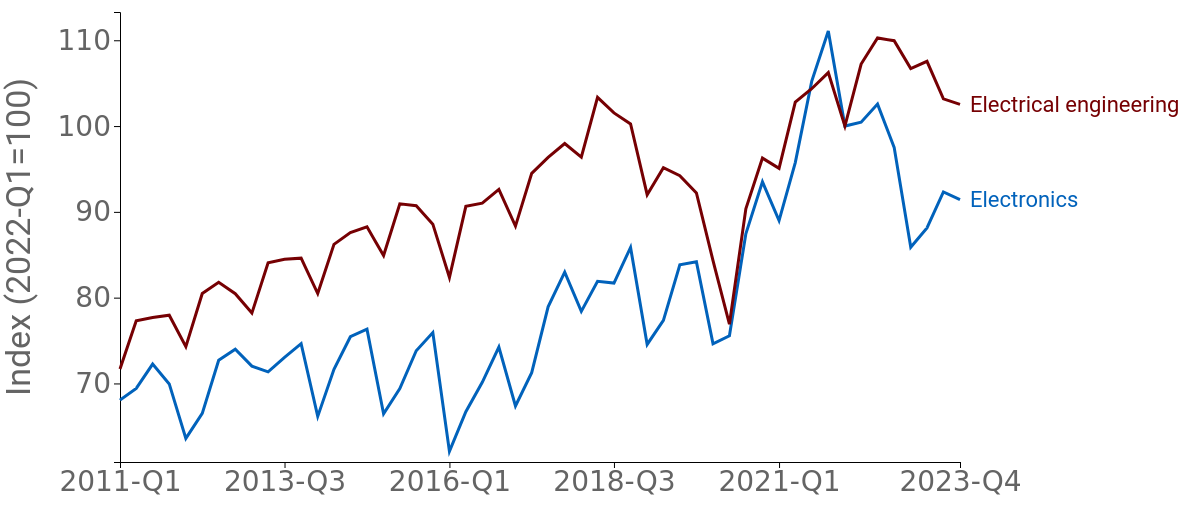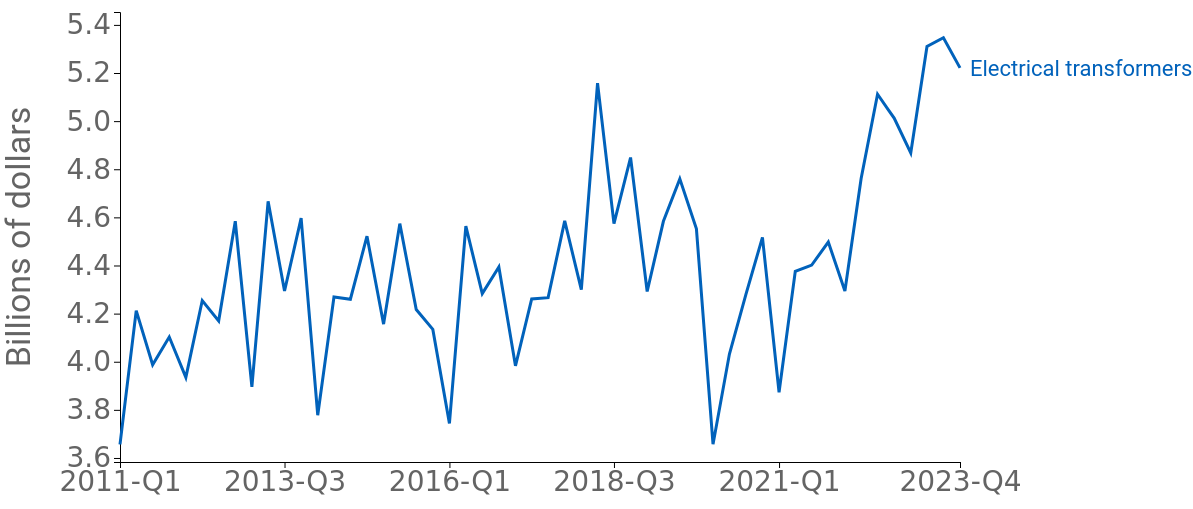Electronics and electrical engineering compared
An analysis of key sectors in the energy and digital transition, with a focus on processors and Italian positioning
Published by Simone Zambelli. .
Italy Electronics High-tech Global economic trends
Two industries experiencing high rates of global demand growth are the electronics industry and the electrical engineering industry, which in recent years have ridden the wave of digitalization and the push for sustainability.
However, there is often confusion about what is meant by "electronics" and "electrical engineering" and what the fundamental differences are when discussing these industries. Let's try to clarify.
Electronics is an economic sector concerned with the production, design, and distribution of electronic devices, those devices that use the flow of electrons to process, transmit, and manage electrical signals, fundamental building blocks of modern communication. Electronics underpins many recent technologies that influence various aspects of our daily lives: computers, mobile phones, televisions, communication systems, and much more. It is one of the most globally oriented sectors and is characterized by a strong focus on technology and continuous innovation.
The electrical engineering industry, on the other hand, focuses on the design, production, and maintenance of devices and systems that use electricity to generate, transform, or distribute electrical energy. Its importance lies primarily in providing safe and efficient electrical energy for a wide range of industrial, commercial, and domestic applications. Some products at the core of this sector are electrical cables, electric motors, and transformers. This sector is also heavily globalized and underpins industrial automation and sustainable energy technologies.
The two industries described above are already particularly important but are likely to become even more so in the near future as their demand is directly impacted by the changes that will revolutionize the economic world in the coming years: digital transition and energy transition. Let's take a look at the dynamics of the two sectors from 2011 to today in terms of global trade.
Fig.1 - Dynamics of global demand for electronics and electrical engineering
(index 2022-Q1 = 100, constant prices)

Source: ExportPlanning
Over the past 10 years, both sectors have experienced sustained growth, despite the slowdown caused by the pandemic. However, both sectors quickly recovered pre-crisis levels, reaching their respective historical highs in 2022.
In 2023, however, electronic components suffered a severe setback, reflecting a gradual normalization of user purchasing policies, after, during 2021 and the first part of 2022, product shortages had led distributors and users to increase precautionary stock levels. The sector also particularly felt the slowdown in global trade that occurred in 2023.
On the other hand, global imports of electrical goods showed relative resilience in the past year. This phenomenon seems to suggest the beginning of a global energy transition, with the electrical engineering sector and its applications as a key sector.
In light of the above, it is interesting to delve into one of the products that characterizes the electrical engineering industry: electrical transformers.
Electrical transformers
The energy transition involves the use of multiple renewable and low-impact energy sources for electricity production. In this perspective, a fundamental role is played by electrical transformers, which allow the energy produced by different sources to be fed into the electrical grid and made available to domestic and non-domestic users. In summary, transformers are key devices in the electrical engineering industry as they enable efficient management of electrical energy. Without transformers, the transfer and distribution of electrical energy would be much more complex and inefficient.
Fig.2 - Global demand for electrical transformers
(constant prices)

Source: ExportPlanning
Consistently with what was said earlier, the graph clearly shows the significant increase in demand for electrical transformers that has been recorded since 2021, supported by the increase in energy transition policies affecting major countries worldwide.
Within this sector, Italy emerges as one of the major global exporters. With a trade share in 2023 of 5.7%, the country ranks fifth, behind China - the absolute market leader with a share of 21.5% -, Mexico with 10% - the main destination for high-tech products by the US market -, and finally South Korea (7.2%) and Turkey (6.8%).
However, within electrical transformers, there are various types that differ in usage and power. The following table lists the main types along with their respective global demand and Italian trade share.
| Global demand in 2023 (bln $) | Italy's exports in 2023 (mln $) | Italy's share in 2023 (%) | |
| Liquid dielectric transformers, having a power <= 650 kVA | 2.6 | 38.6 | 1.5 |
|---|---|---|---|
| Liquid dielectric transformers, having a power> 650 kVA but <= 10.000 kVA | 3.9 | 150 | 3.8 |
| Liquid dielectric transformers, having a power> 10.000 kVA | 6.3 | 377.6 | 6 |
| Dry-type transformers, power <= 1 kVA | 3.7 | 108.8 | 3 |
| Dry-type transformers, power> 1 kVA but <= 16 kVA | 0.7 | 20 | 3 |
| Dry-type transformers, power> 16 kVA but <= 500 kVA | 1.6 | 93.6 | 5.9 |
| Dry-type transformers, power> 500 kVA | 2 | 397.6 | 20.1 |
Source: ExportPlanning-
Particularly interesting is the fact that the category of "dry-type transformers, power> 500 kVA" is the one in which Italy holds a trade share exceeding 20% in 2023, making it the top global exporter, even ahead of China with 19.7%.
In general, it seems that Italy is more specialized in the production of high-power transformers.
Conclusions
Electronics, but especially electrical engineering, represent two key disciplines that continue to gain importance in the contemporary technological and industrial context, providing the basis for technological innovation and environmental sustainability. The electrical engineering sector is becoming increasingly relevant, and in the face of growing interest in electrification in general, it will provide significant growth opportunities in the coming years. It will be important, therefore, for Italy, already well-positioned in the transformer sector, to continue its path of innovation to keep pace with major global competitors, in order to seize new opportunities for national companies.


